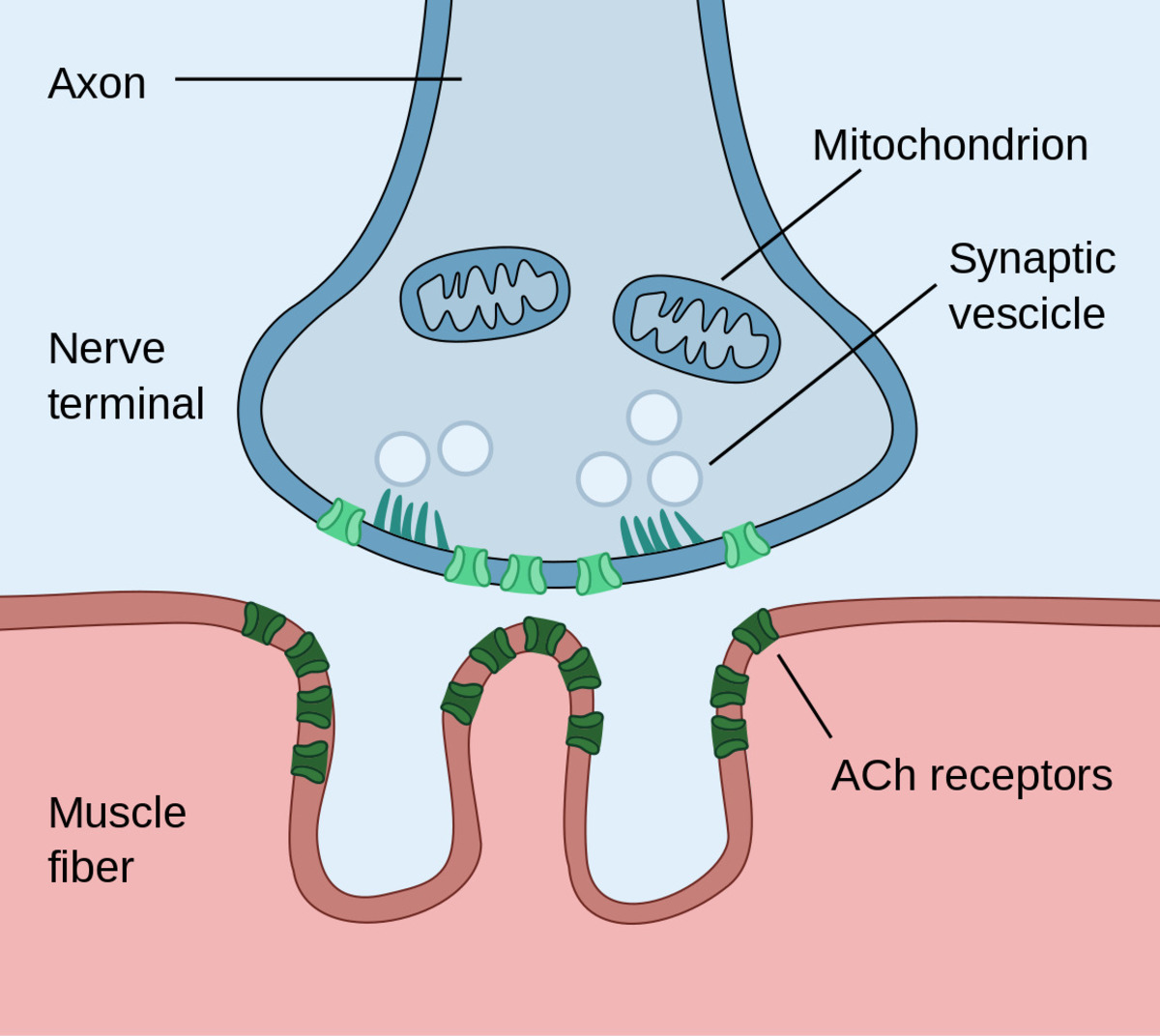
The neuromuscular junction is a fascinating and intricate network that connects the nervous system to the muscles. It plays a crucial role in our ability to move, allowing signals from the brain to be transmitted to our muscles, enabling voluntary movement and motor coordination. Understanding the neuromuscular junction is essential not only for those studying biology and neuroscience but also for anyone interested in how our bodies work.
In this article, we will explore 9 intriguing facts about the neuromuscular junction that will deepen your understanding of this incredible system. From its structure and function to the transmission of signals and the impact of neuromuscular diseases, these facts will shed light on the complexity and importance of this junction. So, let’s dive into the fascinating world of the neuromuscular junction and uncover some surprising insights!
Key Takeaways:
- The neuromuscular junction is like a super-fast communication bridge between nerves and muscles, allowing for lightning-quick muscle movements.
- Disruptions in this junction can cause muscle diseases, showing how important it is for keeping our bodies moving smoothly.
Electrical and Chemical Signals
The neuromuscular junction allows for the transmission of both electrical and chemical signals. When an electrical signal, known as an action potential, reaches the end of a motor neuron, it triggers the release of neurotransmitters into the synaptic cleft.
Acetylcholine is the Key Player
Acetylcholine is the primary neurotransmitter involved in signal transmission at the neuromuscular junction. It binds to receptors on the muscle fiber, causing muscle contraction to occur.
Rapid Communication
The transmission of signals at the neuromuscular junction is incredibly fast. It takes just milliseconds for the action potential to travel down the motor neuron and for acetylcholine to bind to receptors on the muscle fiber.
One-to-One Relationship
Each motor neuron forms a unique connection with a specific muscle fiber at the neuromuscular junction. This one-to-one relationship ensures precise control over muscle contraction.
Motor End Plate
The region of the muscle fiber that interacts with the motor neuron is called the motor end plate. It is highly specialized to receive and transmit signals efficiently.
Myelin Sheath Protection
The motor neuron leading to the neuromuscular junction is covered in a myelin sheath, which helps to insulate and protect the nerve fibers, allowing for faster conduction of electrical signals.
Synaptic Vesicles
Within the motor neuron, neurotransmitters such as acetylcholine are stored in small sacs called synaptic vesicles. When an action potential reaches the end of the neuron, these vesicles release their contents into the synaptic cleft.
Fine-Tuning Muscle Contractions
The neuromuscular junction plays a crucial role in fine-tuning muscle contractions. The strength and duration of contraction can be adjusted by varying the frequency and intensity of signals transmitted at the junction.
Neuromuscular Diseases
Disruptions in the neuromuscular junction can lead to various neuromuscular diseases, such as myasthenia gravis and Lambert-Eaton syndrome. These conditions affect the transmission of signals between the motor neuron and muscle fiber, resulting in muscle weakness and fatigue.
These 9 intriguing facts about neuromuscular junction highlight the importance of this intricate connection in facilitating precise control of movement in the human body. Understanding the complexities of this junction can provide valuable insights into the functioning of the nervous and muscular systems.
Conclusion
The neuromuscular junction is a fascinating and crucial component of our nervous and muscular systems. Understanding how it functions can provide valuable insights into various neuromuscular disorders and potential treatment options. From the intricate communication between nerve cells and muscle fibers to the remarkable speed and precision of signal transmission, the neuromuscular junction exemplifies the complexity and elegance of our biological processes.
As researchers continue to delve into the mysteries of the neuromuscular junction, we can expect further advancements in our understanding of neuromuscular diseases and potential therapeutics. By harnessing the power of this intricate connection, medical professionals and scientists aim to improve the quality of life for individuals affected by neuromuscular disorders.
In conclusion, the neuromuscular junction serves as a vital link between the nervous system and muscles, enabling the coordination and control of our movements. By exploring the intriguing facts surrounding this junction, we can gain a deeper appreciation for the astonishing complexity and functionality of our body.
FAQs
1. What is the neuromuscular junction?
The neuromuscular junction is the connection between nerve cells (motor neurons) and muscle fibers, where the transmission of nerve impulses leads to muscle contraction.
2. How does the neuromuscular junction work?
When an electrical signal reaches the end of a motor neuron, it triggers the release of neurotransmitters (specifically acetylcholine) into the synaptic cleft. The neurotransmitters then bind to receptors on the muscle fiber, initiating a series of events that result in muscle contraction.
3. What happens in neuromuscular disorders?
Neuromuscular disorders can disrupt the function of the neuromuscular junction, leading to muscle weakness, fatigue, and other symptoms. Conditions such as myasthenia gravis and muscular dystrophy are examples of neuromuscular disorders.
4. Can neuromuscular disorders be treated?
While there is currently no cure for most neuromuscular disorders, treatments can help manage symptoms and improve quality of life. These may include medications, physical therapy, and in some cases, surgical interventions.
5. Are neuromuscular junctions found throughout the body?
Neuromuscular junctions are found in skeletal muscles throughout the body. They are not present in smooth muscles or cardiac muscles, which have different mechanisms for contraction.
Neuromuscular junctions aren't the only fascinating aspects of our nervous system. Dive deeper into the world of neural communication by exploring synaptic transmission, where electrical signals dance between neurons. Neurotransmitters, the chemical messengers of the brain, play a crucial role in this process. Finally, let's not forget the electrifying journey of action potentials, which trigger muscle contractions and bring our bodies to life. Each of these topics holds a wealth of captivating facts waiting to be discovered.
Was this page helpful?
Our commitment to delivering trustworthy and engaging content is at the heart of what we do. Each fact on our site is contributed by real users like you, bringing a wealth of diverse insights and information. To ensure the highest standards of accuracy and reliability, our dedicated editors meticulously review each submission. This process guarantees that the facts we share are not only fascinating but also credible. Trust in our commitment to quality and authenticity as you explore and learn with us.


